About the Book
X
Chapter Analysis
Chapter 28: The Priestly Garments
Background History and Timeline: Exodus continues the narrative of the Israelites' journey through the wilderness, following their deliverance from Egypt. The events likely occurred around the late 15th or early 14th century BCE.
Locations Mentioned: The chapter focuses on the instructions for the construction of the garments for Aaron and his sons, the priests, who would serve in the tabernacle.
Themes and Conflicts: Exodus 28 elaborates on the garments to be worn by the high priest and the other priests, emphasizing themes of holiness, consecration, and the mediation of God's presence. It underscores the importance of the priesthood in facilitating worship and offering sacrifices on behalf of the people.
Main Characters: The main characters in this chapter include Moses, Aaron, Bezalel (the skilled craftsman), and the Israelites.
Specific Passages:
Exodus 28:1-5: Instructions for the making of the ephod, a vestment worn by the high priest, and the breastpiece, which contains the Urim and Thummim for seeking God's guidance.
Exodus 28:6-14: Specifications for the making of the shoulder pieces, the two onyx stones engraved with the names of the twelve tribes, and the chains to hold the breastpiece in place.
Exodus 28:15-30: Details regarding the making of the turban, the crown, and the plate of pure gold engraved with the inscription "Holy to the Lord."
Exodus 28:31-43: Instructions for making the robe, the tunic, the sash, and the undergarments for Aaron and his sons, ensuring that they are properly attired for their priestly duties.
Explanation: In Exodus 28, God provides Moses with detailed instructions for the making of the priestly garments, which were to be worn by Aaron, the high priest, and his sons, who would serve as priests in the tabernacle.
The garments were designed to reflect the holiness and consecration of the priesthood and to facilitate the priests' role as mediators between God and the people. The high priest's garments were particularly elaborate and included the ephod, the breastpiece with the Urim and Thummim, the robe, the turban, and the plate of pure gold engraved with the inscription "Holy to the Lord."
The ephod, breastpiece, and other vestments were made of fine linen, blue, purple, and scarlet yarn, and gold thread, adorned with precious stones and embroidered with intricate designs. Each element of the priestly attire was crafted according to specific measurements and specifications, ensuring their suitability for the sacred duties of the priesthood.
The garments served both practical and symbolic purposes, providing attire suitable for the priestly functions within the tabernacle and serving as tangible reminders of the priests' consecration and dedication to God.
Exodus 28 underscores the significance of the priesthood in Israelite worship and the importance of proper attire in facilitating the priests' mediation of God's presence among His people. The garments symbolize the holiness and sanctity of the priesthood and the reverence with which the priests approached their sacred duties.
The authorship of Exodus is traditionally attributed to Moses, who recorded the events and interactions with God during the Israelites' journey to liberation. While non-biblical sources may not directly verify the specific accounts, archaeological evidence corroborates aspects of ancient Israelite history and culture, providing context for the biblical narrative.
Exodus 28 highlights the meticulous planning and craftsmanship involved in the construction of the priestly garments, reflecting God's desire for His people to approach Him with reverence and devotion.
